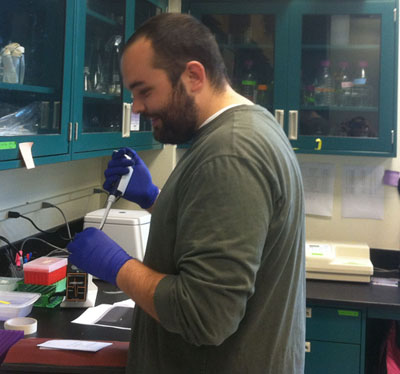Karatan Lab
Randy Cockerell
Ece Karatan
karatane@appstate.edu
Appalachian State University
Department of Biology
Rankin Science North
319 (Office), 303 (Lab)
828-262-6742

Analyzing the catalytic activity of MbaA
Vibrio cholerae, the causative agent of the human disease cholera, can be found in the marine environment often in the form of a biofilm. A biofilm is comprised of a layer of living cells that excrete an extracellular matrix. A biofilm offers several advantages in the marine environment and the human host. In the human host for example, the biofilm can protect against the low pH of the stomach as well as protect the cells from antibiotics. Biofilms form in response to environmental signals and those signals are transduced via a signaling pathway. In V. cholerae, biofilm formation is regulated by the c-di-GMP pathway that involves regulating the concentrations of c-di-GMP. Cells that utilize the c-di-GMP pathway utilize two different protein domains to either degrade or synthesize c-di-GMP. The phosphodiesterase domain degrades c-di-GMP while the diguanylate cyclase domain synthesizes the molecule.
My research involves the MbaA protein which contains both a phosphodiesterase and a diguanylate cyclase domain. However, it is theorized that only the phosphodiesterase domain is active. Previous studies have deleted the MbaA gene and observed changes in biofilm formation in V. cholerae, which have suggested MbaA to be a biofilm repressor. My goals will first be to purify the MbaA protein and to determine if it is capable of degrading c-di-GMP. Secondly, a set of biofilm assays will be used to confirm that any phosphodiesterase activity in MbaA actually causes a change in biofilm formation.